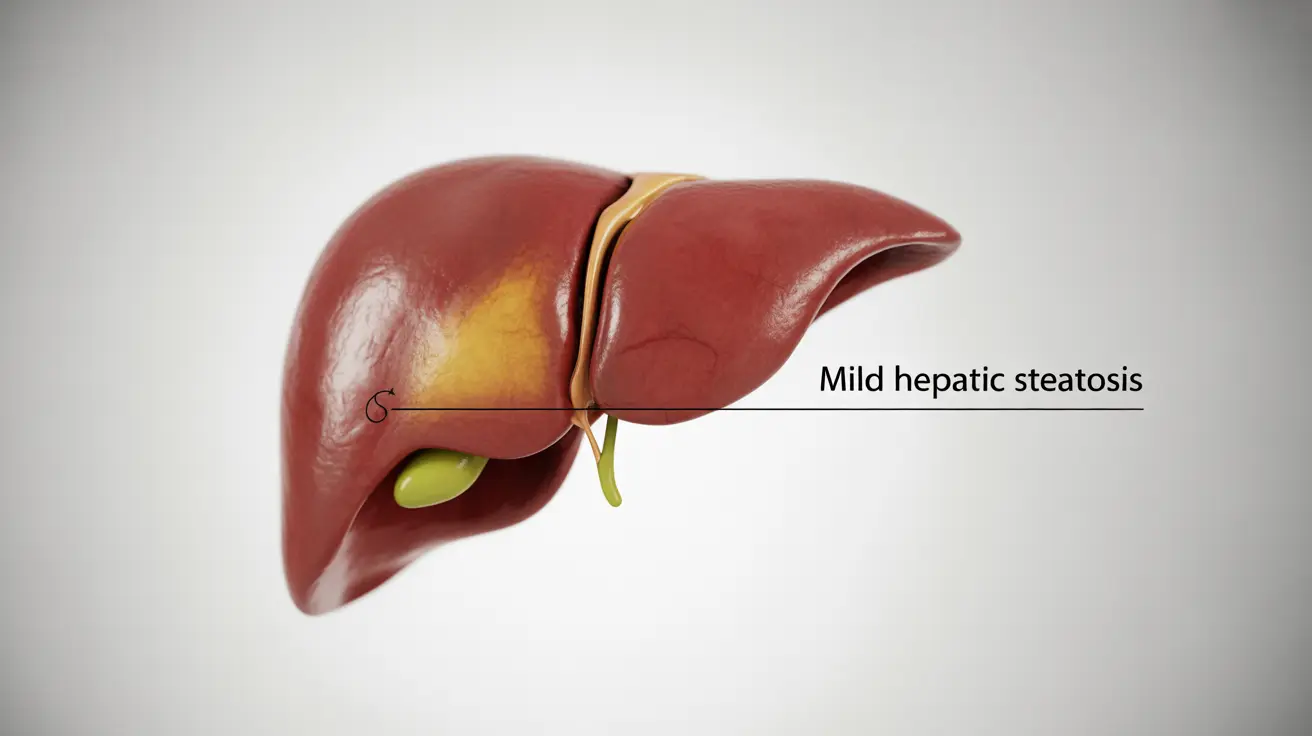Mild hepatic steatosis, commonly known as early-stage fatty liver disease, occurs when excess fat accumulates in liver cells. This condition affects millions of people worldwide and often develops without obvious symptoms, making it crucial to understand its causes, risk factors, and potential treatments.
While mild hepatic steatosis can be concerning, the good news is that it's often reversible with appropriate lifestyle modifications and medical management. Early detection and intervention are key to preventing progression to more severe liver conditions.
Understanding Mild Hepatic Steatosis
Mild hepatic steatosis is characterized by fat accumulation affecting less than 33% of liver cells. This initial stage of fatty liver disease typically doesn't cause permanent liver damage if addressed promptly. However, understanding its nature and implications is essential for effective management.
Signs and Symptoms
Many people with mild hepatic steatosis experience no noticeable symptoms. However, some individuals might encounter:
- Fatigue or unexplained tiredness
- Mild discomfort in the upper right abdomen
- Slight enlargement of the liver
- Occasional digestive issues
- Subtle changes in appetite
Diagnostic Process
Diagnosing mild hepatic steatosis typically involves several steps:
- Blood tests to check liver function
- Imaging tests (ultrasound, CT scan, or MRI)
- Physical examination
- Medical history review
- In some cases, liver biopsy
Common Causes and Risk Factors
Several factors can contribute to the development of mild hepatic steatosis:
Lifestyle Factors
- Excessive alcohol consumption
- Poor dietary habits
- Sedentary lifestyle
- Rapid weight gain
Medical Conditions
- Type 2 diabetes
- Obesity
- Metabolic syndrome
- High cholesterol levels
Treatment and Management
The primary approach to treating mild hepatic steatosis focuses on lifestyle modifications:
Dietary Changes
- Reducing processed food intake
- Limiting sugar consumption
- Increasing fiber intake
- Choosing healthy fats
Exercise and Physical Activity
- Regular moderate exercise
- Aim for 150 minutes of activity weekly
- Combination of cardio and strength training
Other Lifestyle Modifications
- Weight management
- Limiting alcohol consumption
- Regular sleep schedule
- Stress management
Prevention Strategies
Preventing mild hepatic steatosis involves maintaining healthy habits:
- Regular exercise routine
- Balanced, nutritious diet
- Moderate alcohol consumption
- Regular health check-ups
- Maintaining a healthy weight
Potential Complications
If left untreated, mild hepatic steatosis can progress to more serious conditions:
- Advanced fatty liver disease
- Liver inflammation
- Fibrosis
- Cirrhosis in severe cases
Frequently Asked Questions
What are the common signs and symptoms of mild hepatic steatosis or grade 1 fatty liver disease? Most people with mild hepatic steatosis don't experience obvious symptoms. However, some may notice fatigue, mild abdominal discomfort in the upper right side, and occasional digestive issues.
How is mild hepatic steatosis diagnosed and when should I see a doctor about it? Diagnosis typically involves blood tests, imaging studies like ultrasound or CT scans, and physical examination. You should see a doctor if you experience persistent fatigue, abdominal pain, or have risk factors for liver disease.
What causes mild hepatic steatosis and what risk factors increase the chance of developing it? Common causes include poor diet, sedentary lifestyle, excessive alcohol consumption, obesity, type 2 diabetes, and metabolic syndrome. Risk factors include being overweight, having high cholesterol, and leading an inactive lifestyle.
Can mild hepatic steatosis be reversed, and what lifestyle changes help improve this condition? Yes, mild hepatic steatosis is often reversible through lifestyle changes including weight loss, regular exercise, healthy diet modifications, and limiting alcohol consumption. These changes can significantly improve liver health when implemented consistently.
What are the potential complications if mild hepatic steatosis is left untreated? If untreated, mild hepatic steatosis can progress to more severe forms of fatty liver disease, potentially leading to inflammation, fibrosis, and in severe cases, cirrhosis. Early intervention is crucial to prevent these complications.




